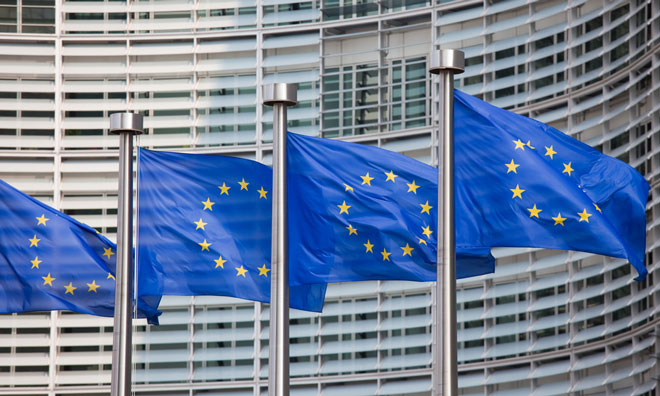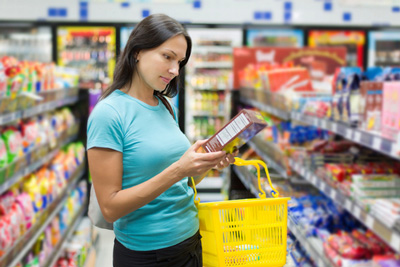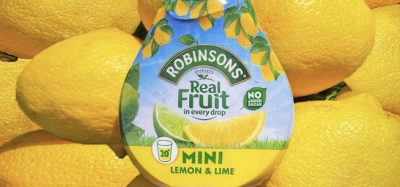Are Your Food Labels Ready for 2017? Labelling Solutions for SME’s
- Like
- Digg
- Del
- Tumblr
- VKontakte
- Buffer
- Love This
- Odnoklassniki
- Meneame
- Blogger
- Amazon
- Yahoo Mail
- Gmail
- AOL
- Newsvine
- HackerNews
- Evernote
- MySpace
- Mail.ru
- Viadeo
- Line
- Comments
- Yummly
- SMS
- Viber
- Telegram
- Subscribe
- Skype
- Facebook Messenger
- Kakao
- LiveJournal
- Yammer
- Edgar
- Fintel
- Mix
- Instapaper
- Copy Link
Posted: 14 December 2016 | Roni Avital, Managing Director, Nutraid-Europe | No comments yet
With mandatory nutrition labelling fast approaching, we asked our resident regulation expert Cesare Varallo to grant us an insight into what this might mean for manufacturers in 2017… This article I received is a helpful wake-up call to all food manufacturers and retailers out there that have not updated, or are just getting around to […]


With mandatory nutrition labelling fast approaching, we asked our resident regulation expert Cesare Varallo to grant us an insight into what this might mean for manufacturers in 2017…


This article I received is a helpful wake-up call to all food manufacturers and retailers out there that have not updated, or are just getting around to updating their food labels according to EU Regulation 1169/2011 Food Information.
The contribution comes from Roni Avital from Nutraid-Europe.
Are Your Food Labels Ready for 2017? Labelling Solutions for SME’s
Food labelling has been around since the beginning of the 20th century, first introduced in Italy on paper strips. Since then, Italian food labelling regulations have developed to provide structure and guidance on issues such as food safety and consumer health.
Today the European Commission helps set the regulation standard with a mission to create common ground for diffusing food information across member states.
On December 13 2016, EU 1169/2011 food information to consumer regulation will come into effect, to provide consumers with a greater security, clarity and transparency of information.


Approximately 260,000 SME’s in the EU food and drink sector – obliged to create new labels or update their existing ones – carry the heavier burden.
These bakers, confectioneries, sandwich & salad shops, and many other retailers and caterers, need to accurately analyse their recipe’s nutrient and allergen information, and understand the legislation well enough to create complaint labels. Most do not have the capacity to deal with all this on their own.
So what are their options, and what existing market solutions can take away this legislation headache?
Laboratory testing: You can bring your product to the laboratory and have it analysed for all the necessary nutrients and values. If it’s a good lab, you will get very accurate results.
The down side is that it’s very expensive, and for each recipe change, you will need to repeat the process. Also you will still need someone to transform the nutrients table into a compliant label.
Approximately 260,000 SME’s in the EU food and drink sector carry the heavier burden.
External consultants: Such as food technologist and food regulatory advisers can do your nutrient calculations for you, and also create your label. It is still expensive (although not as pricey as Lab testing), also considering that you will need their services every time you change even the smallest ingredient in any of your recipes.
Database Analysis Software: The big advantage to using a database analysis software is that it saves the hassle and expense of using an external resource. It is a flexible solution, and you can independently update your recipes and labels.
As you are the one creating your labels, the down side is that you need to take responsibility for entering all the ingredients and their quantities correctly.
Today, there are a handful of software solutions in Italy providing this type of service.
How do you know which solution is right for you?
- Laboratory testing is the best solution if you are required to provide data other than the label nutritional value in the label, such as chemical analysis, pesticide exposure, etc.
- A Consultant may be right for you if there’s a need for a signature or the responsibility of a professional. It may also be part of package deal when developing new products with a consultancy.
- Software is the best solution for you if you wish to manage your own recipes independently without overhead costs, and can handle the responsibility of entering your recipe data.
Here is some helpful criteria to help you distinguish between available solutions and choose the best database analysis software for your needs:
- Usability: some solutions are more complex and require higher technical skills than others.
Choose a software that is easy to use, otherwise what you save on money, you will “pay” back in work hours. - Business focus: is the software you are trialling dedicated to your type of business? It’s very easy. If you are a manufacturer, don’t choose a software aimed for dietitians.
- Database accuracy: it is important to check which databases are included in the software you are testing. The largest and most comprehensive database in the industry in the USDA.
Also check for the availability of industry-specific ingredient lists (for example, e-numbers) most relevant to your business. - Online vs. local: local software require installation, management and frequent backup of your data, while online software do not. While storing your data locally may feel safer, today’s encryption technologies make most online software just as secure.
- Label export: As most label printers come with a label design software, it is important to check if the software you are testing can interface with the design-software of your printer. Alternatively you may want to ensure you can customise your labels and export them to a print shop.
- Languages: for exporting outside of Italy you will need to translate your label to additional languages, or create a multiple-language label. If you export, it is best to find a solution that can provide automatic translation and can also support foreign country labelling standards.
Cooking or baking process calculations: summing the nutritional values of the ingredients is not enough, as cooking or baking changes the values of the final product, due to water loss and oil absorption. Verify the software you choose relates to this process.
___________________________
The new Regulation (EU) No 1169/2011 on the provision of food information to consumers entered into application on 13 December 2014. The obligation to provide nutrition information will apply from 13 December 2016.
The new law combines 2 Directives into one legislation:
-
2000/13/EC – Labelling, presentation and advertising of foodstuffs (applicable until 12 December 2014)
-
90/496/EEC – Nutrition labelling for foodstuffs.
___________________________
To read Cesare Varallo’s previous article on EU regulation and food fraud, click here.
To find our more about Nutraid click here.







